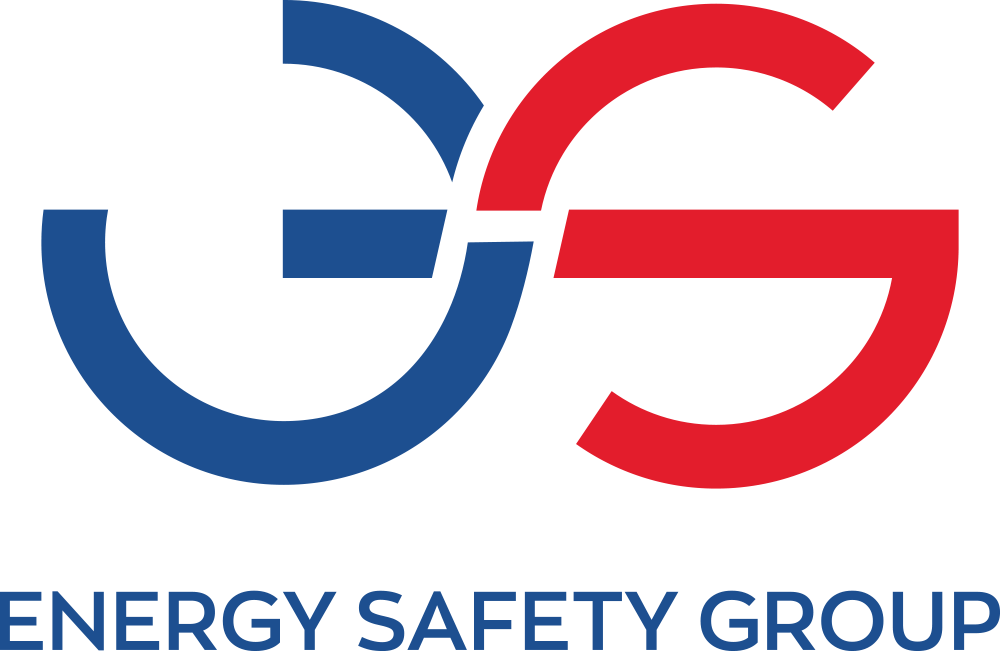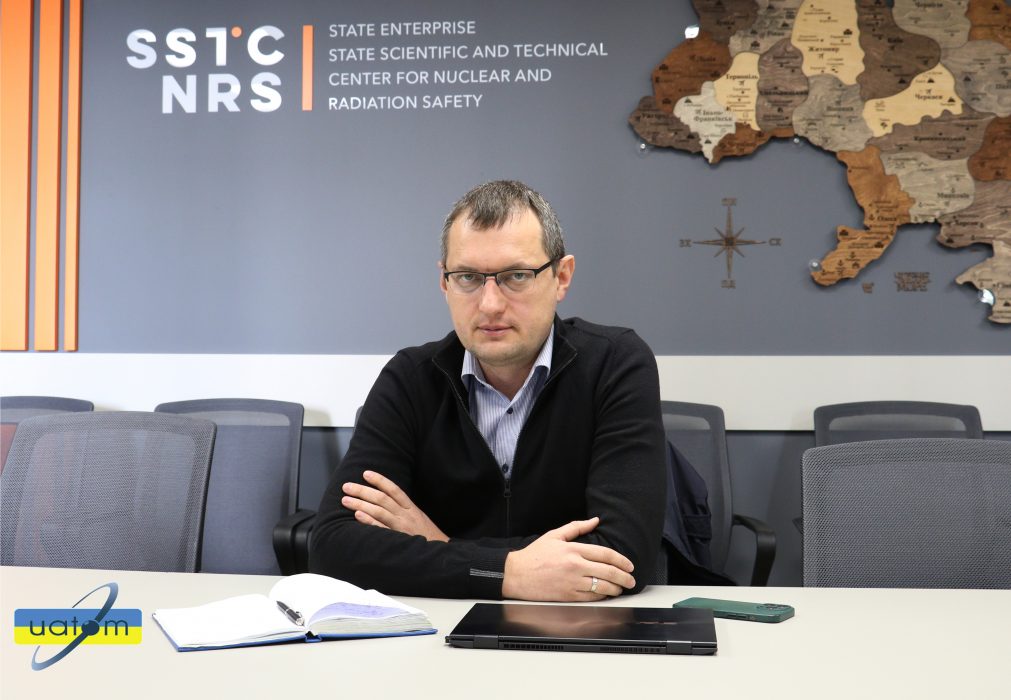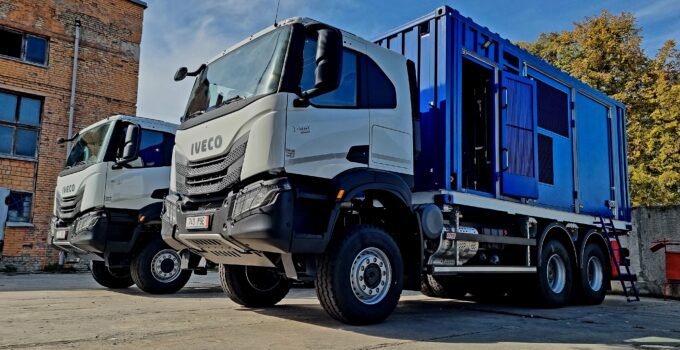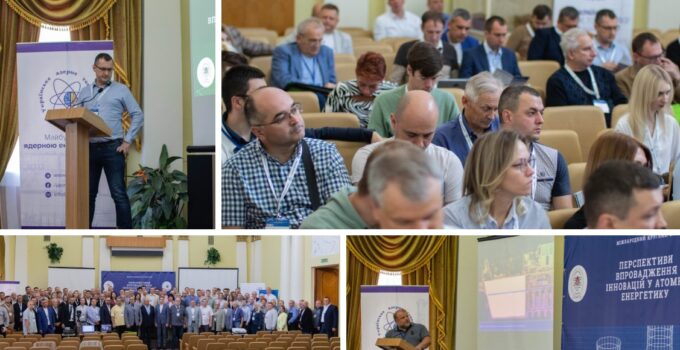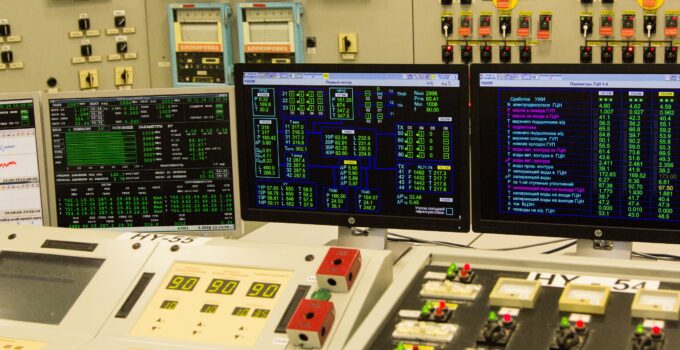World Seeks to Replace Fossil Fuel with Hydrogen. This is Precisely What Government Strategies Show – Oleksandr Mazurok for Uatom.org
Technical director Energy Safety Group Oleksandr Mazurok talked with the editors of the Uatom.org website about the work on the NPHyCo project, hydrogen energy, prospects for hydrogen production at Ukrainian nuclear power plants (NPPs), implementation of hydrogen plants in Ukraine and in the world.
– Oleksandr, first let’s see what hydrogen energy is and in what areas it can be used?
This is energy produced from hydrogen, that is, the reverse process of converting hydrogen.
Hydrogen can be used to refuel vehicles, produce fertilizers and even in heavy industry. Its use is actively developed around the world, while technologies become cheaper and production capacity grows. For example, at the ÚJV Řež Czech Nuclear Research Institute, a bus powered by hydrogen energy, namely hydrogen fuel elements, has been running for more than 5 years. I believe that the amount of hydrogen energy used would increase over the years, just as the amount of solar energy used to grow, and the cost of each solar kilowatt decreased from year to year.
– Will hydrogen be able to compete with and replace natural gas, and is this necessary?
It is a mistake to think that hydrogen can compete. He’s already competing. Primarily in the investment sector and experimental developments. In particular, Germany is interested in hydrogen produced in Ukraine to replace natural gas in heavy industry. This is a certain diversification that can reduce dependence on Russia and, in general, on oil and gas as carbon resources. Now information sources report on an increase in oil prices in the world, due to the war in Israel, gasoline prices will rise accordingly. If vehicle engines ran on hydrogen, the impact would be less, although this should be investigated. The EU has been working on the regulatory framework for hydrogen technologies, modernization of infrastructure, etc. for a long time. Ukraine is only at the first stage, because the hydrogen strategy has been developed recently and there are many open issues that need to be resolved.
– In your opinion, why the issue on hydrogen energy is raised only now? Why has it gained such publicity and popularity today?
If when you are talking about hydrogen energy you mean both the production and use of hydrogen, then I agree that it indeed has become significantly more popular in recent years. However at first, I’ll tell you about a special case regarding the publicity and popularity of hydrogen energy. At the end of September, I reported on the NPHyCo project at conference “Prospects for the Introduction of Innovations in Nuclear Energy” and was surprised by the interest of the scientific and practical community in the implementation of hydrogen technologies at NPPs. It is important that I did not notice any skepticism in the questions during the report and discussions on the sidelines; on the contrary, only interest. Maybe, it is something new to everyone, just like small modular reactors were once, but every year it becomes more and more difficult to come up with innovations and implement them. In general, the whole world is moving towards the maximum possible production and use of hydrogen. This is implemented only with the desire to achieve maximum decarbonization and is impossible without nuclear and regenerative energy.
Even before submitting an application to this project and before russia’s full-scale invasion of Ukraine, we had discussions and certain agreements with Framatome dealing with hydrogen technologies, as well as meetings with Energoatom. That is, 4-5 years ago the importance of this technology for NPPs was already discussed. Europe has been working on this technology, in particular, in the USA, a pilot electrolyzer with a capacity of 1 MW was installed at an operating NPP, and in Canada, funding was allocated for the development of the technologies. All this took place in parallel with statements about zero emissions from nuclear energy. However, in Ukraine this has not been developed. Then it was not profitable due to a sufficient amount of minerals and cheap prices for them, and the lack of political leverage.
I know that working groups have been created to study hydrogen transport, and hydrogen strategies have been developed for renewable energy sources. Currently, hydrogen energy is mentioned in the Energy Strategy of Ukraine and Hydrogen Strategy of Ukraine. However, more and more people started talking about hydrogen energy after the russian aggression, when Europe realized that it would be difficult without natural gas.
– Please tell us more about the project.
NPHyСo is a research project dedicated to studying the potential for large-scale hydrogen production capacities at NPPs. In general, the project is envisaged for two and a half years, during one of which we are already working and have the first results. The project objective is to show the added value of hydrogen production as an alternative to traditional supply of electricity produced at NPPs to the grid. In other words, it is necessary to understand what is more profitable for the NPP operator: selling electricity or hydrogen.
– If we already have an idea about the production of electricity by NPP, then how can we produce hydrogen at NPP?
Hydrogen is produced by electrolysis, but this requires access to an NPP, which has an excess of certain resources in peacetime and produces electricity. If a hydrogen plant is constructed within an NPP, you can use electricity and certain resources: purified water, wastewater facilities and nitrogen-oxygen plant. We analyze exactly this in the project.
If, for example, a hydrogen plant is constructed in open field conditions, then you will need more resources, in particular: a site, administrative resources (including engineers, lawyers, accounting, management, etc.), electrolyzer, switchyard, water, compressor for compressed air, nitrogen, cooling system (dry cooling towers or circulation circuits from the river, and cooling ponds), because a lot of energy is released during electrolysis. From the viewpoint of inflows, this is a significant investment, we have a constructed NPP, all the infrastructure and part of the necessary environment. NPP can use electricity produced for house loads, which can include a hydrogen plant. Even maintenance can be carried out by efforts of NPP.
That is, the project objective is to integrate the hydrogen plant as much as possible into the NPP infrastructure in order to reduce capital investments in the construction and so that Energoatom can effectively use excessive electricity, capabilities of standard power unit systems and administrative resources. The use of the NPP infrastructure is an extremely important competitive lever in the implementation of hydrogen technologies, therefore construction of hydrogen plants in an open field conditions is more expensive and riskier from the business point of view.
– As part of the NPHyCo project, your company is working in area “Preparation of the Implementation Roadmap.” Explain what does the roadmap mean and what does your work consist in?
The project includes 6 work packages (some of them are called roadmap) starting with the search for conceptual solutions, development of a technical, economic, licensing roadmap and development of a pilot project. In order not only to take part in the project in our area, but also to implement it in practice, we participate in subtasks in all the areas.
As part of the first conceptualization work package, we select the most suitable solution, type of electrolyzers. Currently, three types of electrolyzers have been selected, two of which use hydrogen electrolysis and one uses steam electrolysis. Steam electrolysis may be the optimal solution at European plants, but we have already obtained the result that for Ukrainian NPPs this option is impossible. Then, a location is selected on the NPP territory. It is best for the hydrogen plant to be located in the control area, because it should become a part of the NPP.
When we work on the economic roadmap, we analyze resources, prices, and we need to not only select a solution, but also show whether it is profitable or not.
In the technical roadmap, we collected initial data, developed special questionnaires, and had a number of iterations with NPP experts. Our task is to analyze different integration scenarios and show what will happen if we construct a hydrogen plant in the field, and what will happen if it is 100% integrated into the NPP environment. In addition, we consider different options and at the same time communicate with the NPP. If we cannot integrate in a certain place, we look for other opportunities and conduct certain studies. For example, we select a site, but it turns out that it is impossible to construct a hydrogen plant on it, since there are cooling systems and this could disturb the thermal balance of the NPP, then we study dry cooling towers. If the NPP cannot provide compressed air, we technically select a compressor. That is, we are only interested in realistic scenarios for practical implementation.
The objective of the implementation roadmap is to develop one or more real pilot projects at real plants in selected locations with connection to real systems of NPP units. This all is based on the results of previous work packages, which define concepts, production technologies, scenarios and levels of integration for hydrogen plants at NPPs, technical elaboration and economic calculations, as well as the opportunities and issues of licensing the placement for such hazardous facilities within the NPP control areas.
The latter is preceded by the work package aimed at ensuring communication and interaction with the public, within which we have created a website for the dissemination of information and communication. We also plan to conduct training and courses at institutes and there is already a request to develop a model of the hydrogen plant in the full-scale simulator.
– Tell us about the Energy Safety Group team working on this project.
Five engineers are constantly working on the project, but additional experts are involved in certain tasks/areas. Everyone in this project, as well as in the company in general, is experienced, ambitious and professional engineers with experience in nuclear energy or nuclear power plants. Some constructed or operated NPPs, some worked in the State Nuclear Regulatory Inspectorate and State Scientific and Technical Center for Nuclear and Radiation Safety, so we already obtain certain expert review within the company. It is the experience in implementing diverse and complex projects that builds our team, which, in my opinion, is one of the best in the industry.
– How did russia’s full-scale invasion of Ukraine affect the company work on this project?
Immediately after russia’s full-scale invasion of Ukraine, the European Union asked whether our company would continue to work in this project and whether it would remain a leader in area “Preparation of the Implementation Roadmap.”
Before the start of the main implementation tasks, we took a break for six months to understand whether we could work and how. However, since the beginning of its existence, the company has created a special cloud-based project management system that allows working even from Antarctica and unite teams in different countries. This helped us a lot during the COVID pandemic and helps us now during the full-scale war.
Our offices are not only in Ukraine, but also in the Czech Republic, Hungary and Slovakia. After 24 February 2022, we added several tasks to our colleagues from the Czech office, who helped primarily in communication and gave us the opportunity to stay in the project, because in the first months in Ukraine, it was difficult to do and predict anything. This also allowed reducing the risks of project implementation associated with the lack of electricity and the Internet, need to leave the workplace during air alarms, etc. Although, of course, we have EcoFlow and Starlinks. I note that the project engages engineers liable for military service who cannot travel abroad, so the Czech office also joins offline meetings. For example, in October last year, there was a kick-off meeting in Europe, at the end of September 2023, there was a meeting in Germany with the annual report. Two of our engineers from the Czech office participated and reported on the results. Therefore, the project continues, European partners see that we work despite the war.
I would like to note a significant contribution into the project by operator Energoatom, which paid attention to the cooperation forming a working group with the participation of experts from the Directorate, Atomprojectengineering, Scientific and Technical Center and NPPs. At the time of submitting an application to the NPHyCo project, we considered the Zaporizhzhia NPP as a pilot one, but after the occupation and the act of nuclear terrorism, we did not stop working, and together with Energoatom, we selected other NPPs. Currently, we have already received a significant amount of necessary initial data, which contribute to introducing the implementation roadmap, as well as to the work on other work packages that precede it. It can be confidently stated that it is Energoatom that is most interested in implementing hydrogen technologies among all operators of European NPPs, cooperates fruitfully and participates in advisory board meetings where the project results are discussed. That is, the operator sees the future behind this, and is not skeptical.
We believe that all this contributed to ensuring that the Ukrainian company and Ukrainian NPPs remained in the project. We have proven to our partners and the European Union that pilot power units are still in Ukraine, they are replaced with power units of the Rivne and Khmelnytsky NPPs, where we then first plan to implement all the developments.
– Tell us about the first results of your work within this project.
As I have already said, we participate in all work packages of the project, because our goal is not only scientific studies, but also practical implementation of hydrogen technologies in the future.
I tried to report the first results at conference “Prospects for the Introduction of Innovations in Nuclear Energy.” A year after the project start, we established communication with Energoatom, because we needed to obtain initial data and permit for further work with the NPP operators, Directorate, Atomprojectengineering, and the Scientific and Technical Center. Then we began to collaborate with partners on each subtask.
With the support of Energoatom, initial data were collected at the Rivne and Khmelnytsky NPPs. The resources that an NPP can provide and those that should be provided autonomously were identified. The possibility of licensing plants within the control areas, etc. was analyzed.
Considering that the Rivne and Khmelnytsky NPP sites are significantly different, it was necessary to study various technical aspects, because this is a European project and the matrices that will be used to select solutions should be applied to any NPP within Europe.
Together with the project participants, we selected 3 electrolyzer technologies, showed their circuit diagrams to NPP operators, and at the same time screened out solutions for a steam electrolyzer. We considered possible scenarios for implementing hydrogen plants into the NPP environment, having studied the connection to NPP electrical circuits, technical documents, including analysis of regulations and identification of necessary changes in the documents.
We are faced with the fact that the regulatory framework is not ready at all for implementing hydrogen technologies. We are talking not only about nuclear energy, because we consider that hydrogen plants will also relate to chemical industry facilities. There are certain regulations in the nuclear industry (for example, NP 306.2.106-2005 “Requirements for Modifications of Nuclear Facilities and Procedure for Their Safety Assessment”), according to which we should develop the preliminary safety analysis report with relevant justification. There are also requirements for the placement of facilities in the control area and use of electricity, which include information on the buildings that can be located there, and in what cases electricity for house loads and auxiliaries can be used. In order to avoid the situation during the practical implementation when the technology has been developed, but it does not meet the Ukrainian legislation and the regulatory framework should be amended, it is necessary to start working with it today.
When the explosion impact calculations are obtained from the safety assessment, then we will be able to confirm locations with connections and move on to studies that become part of the safety analysis reports. That is, we need to conduct not only deterministic assessment for each power unit separately, but also probabilistic analysis for the entire site.
It is also important that, in addition to technical and economic components, the project contains a communication component: work package “Communication, Information and Raising Public Awareness”, because when it comes to implementing something new, especially at existing NPPs, there is a certain skepticism at all levels. That is why we cooperate with Ukrainian operator Energoatom, exchange information, provide the results of our research, receive feedback, etc. In addition, it is important to inform the public, scientific community and energy industry workers. For this, we have planned various activities, in particular reports, publications, discussions, training, which will allow us to solve the issues on implementing hydrogen technologies and on the impact on their lives, safety of NPPs, etc.
– You have already mentioned hydrogen strategies and there are the first project results. What, in your opinion, are the prospects for hydrogen production in Ukraine?
European developments in this area are market-forming, correct and obvious. They arise from current and future needs. Due to such decisions, investments are made in developments that allow supporting and developing the scientific community, and creating projects by companies in the economic sector.
Reading various hydrogen strategies, it seems that Ukraine will be an exporter that meets the needs of many European consumers, especially in Germany. In order to supply significant amounts of the required energy, it is necessary to build up the Ukrainian territory with renewable energy sources, in particular wind and solar power plants, or new NPPs that will operate only for hydrogen production. In these cases, the cost of the hydrogen produced will be significantly higher than in the case of production at existing NPPs, but if there is a buyer, then why not.
As a nuclear expert, I am not a great optimist regarding renewable sources. It is necessary to maintain a balance and evaluate all indicators and risks. Considering that we study the construction of hydrogen plants near NPPs with a capacity of approximately 45 MW with possible scaling, and hydrogen strategies for renewable sources contain capacities of tens of GW, it is obvious that there is no competition yet, and we are not yet talking about the transport and consumption infrastructure. This is a challenge and a difficult task.
– How will this project and its results impact the development of your company and what prospects will be opened for you?
Firstly, we are positioned as a company that works from engineering to commissioning. In addition, among our partners we have the reputation of a company that brings projects to completion. Therefore, our company is interested in projects in which we can participate from the initialization stage and which are likely to be implemented at Ukrainian and European NPPs.
Secondly, we used to cooperate with foreign companies, which allows introducing global experience in the use of up-to-date technologies at Ukrainian NPPs. This project involves not the introduction of existing technologies and experience, but participation from the very beginning and to the implementation at specific NPPs with the solution of specific economic, technical and licensing issues.
We already have experience when in 2016-17 we participated in the DTEK program to replace outdated electrolyzers and provided our services, including engineering and design. Then we replaced the Soviet SEU-20 electrolyzers at the Burshtyn TPP with European electrolyzers. Now this is the only such facility where Soviet equipment has been replaced; SEU-20 is still in operation even at NPP.
Thirdly, every company is, first of all, working personnel, so human potential is being developed. Constant interaction with other partners contributes to professional development of our employees, in particular, improves their English language skills, which is very important considering that foreign support and implementation of foreign technologies increase to the maximum.
Thus, this area is very promising, otherwise we would not work on it. The world is aimed at replacing fossil fuels with hydrogen – this is exactly what government strategies show and we are already looking to the future as a company that will be able to implement the project at operating NPPs in Ukraine.
The source: Uatom.org

